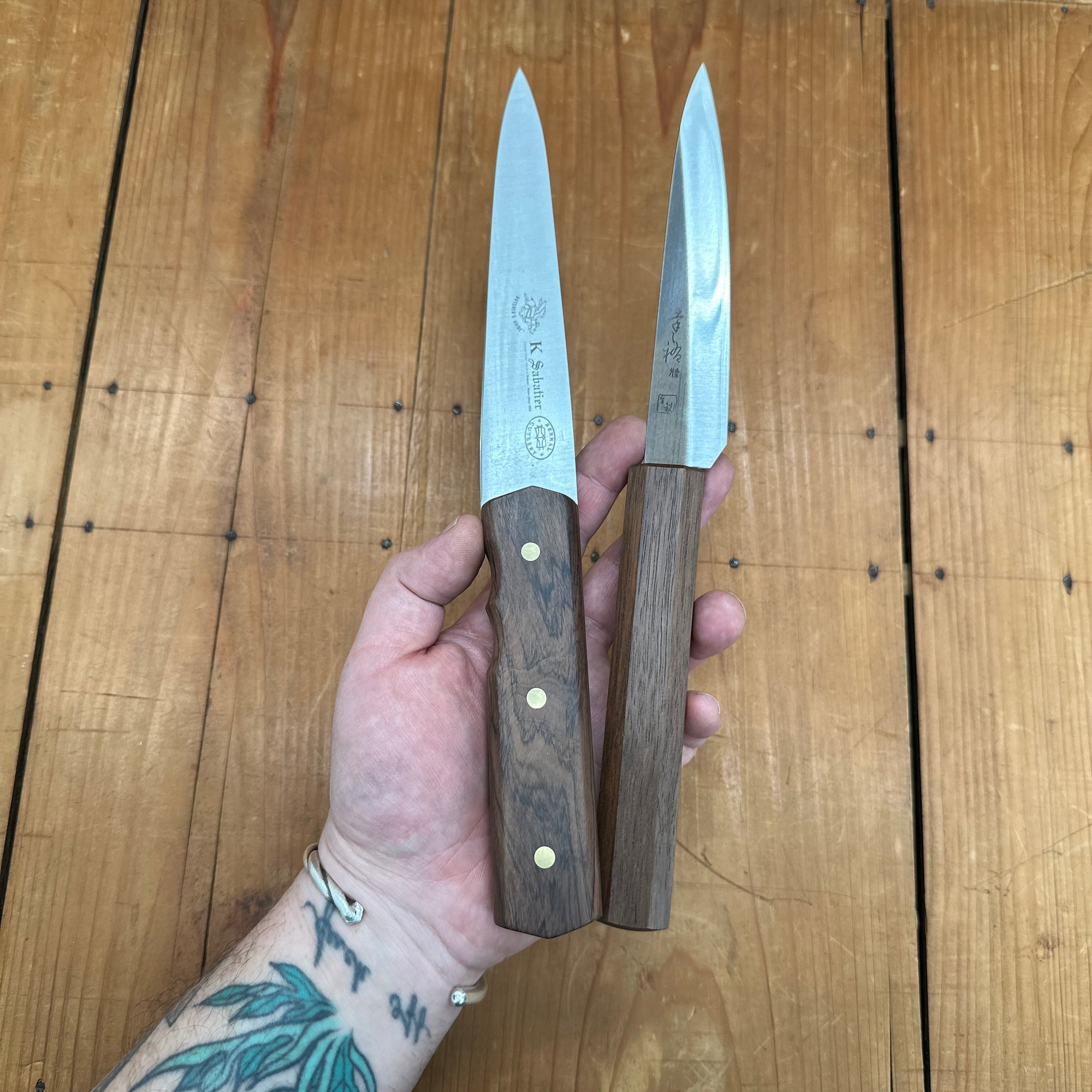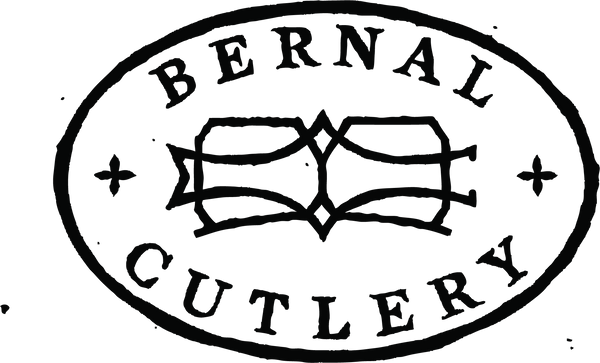Two Bernal Cutlery Collaborations: Bookended Boning Knives
January 18 2024 – Josh Donald

We finally got the Konosuke X Bernal Cutlery Ko-Sabaki knife back in stock. It was the first ever Bernal Cutlery collaboration we did, and getting it back in right now gave some perspective to all the collaborations we have happening and made me grateful to get to work with cooks, butchers, bakers, and of course, knife makers.
Initially, getting the Ko-Sabaki back seemed like weird timing as we were just releasing a butchery knife that had some overlap with the Ko-Sabaki, the Invictus. The Invictus collaboration was done with butcher Dylan Carasco and K Sabatier in Theirs, France, and was years in the making from the first conversation I had with Dylan. He has dedicated himself to learning butchery wholeheartedly. He has sought out some of the best tutelage, moving to new hemispheres and continents on more than one occasion to work in butcher shops that have high standards. Dylan especially got immersed in French butchery in Paris, and we bonded over discussing the old-style French butcher knives. Not many people use them here in the States and can compare them to the more commonly used knives here, so I learned a lot getting to pick his brain and getting reports back on old and new French butcher knives he picked up from us. Dylan tweaked the handle and tip of a super old French boning knife; the sainger and the Invictus were in motion. Philippe at K Sabatier was able to help us get several handles and blade thicknesses,, and I did several different grinding adjustments on the tip. Dylan put lots of miles on them at work, and some went out to Dylan’s butchery colleagues.
The Ko-Sabaki also started from conversations with butchers and cooks doing butchery at their restaurants. When the knife was first conceived around 2015, we had many cooks coming into our old Guerrero St shop looking for Japanese knives for butchery. It was a bit of a Goldilocks and the Three Bears moment often, as the knives available for the fine work of trimming and seaming were very different from knives capable of breaking. Honesuki maru (aka honkatsu) was too bulky once sharpened in a little and had a strong asymmetry that led to pitching to one side during cutting. Petty knives were popular for butchery in restaurants (butchers would NEVER do this), but the sharp heel snags and the small handles are not ideal for a firm grip with cold greasy/wet hands.
At the time, I was doing a lot more handling on Wa (Japanese style) handed knives and had loose Sakai Konosuke blades around the shop. I re-ground and joined different handles and the old HD and GS (pre-HD2 and GS+) blades after changing the shape of the heel and getting some out into the hands of local cooks and butchers. The crucial testing was on. Kosuke Kawamura from Sakai Konosuke was super supportive and helped me figure out handle options, sayas, and packaging, and before too long, the word came back that the SLD GS was the perfect steel for the job. I was putting them all together as they came in, re-grinding the new blades, gluing the handles, and drilling the saya pins. It was more work than receiving already assembled knives and gave me a renewed appreciation for the Konosuke detail finish work on the handles. I was worried that Kosuke would tell me that my work was too messy, but nobody told on me, and it got better. On return visits to Sakai, I got to see how Konosuke and other Japanese makers handled and were able to incorporate some tricks into my work. The blades that we settled on went through several iterations, getting thinner and harder, then thicker again, and finally with wide kireba bevels instead of a convex hamaguri shape. The handle changed from a rounder horn-ferruled octagonal ho or hinoki to a taller octagonal laurel wood. At every change, different feedback came in, sometimes, you can get 4 butchers and have 5 opinions, but I also learned how a lot of different people worked and could put that on the scales when comparing notes.
The Ko-Sabaki hasn’t been on our wall for a long time as the blade production was very backed up. I’m hoping the next batch doesn’t also take years, but it’s nice to have them back and to be reminded of the spirit that our collaborations were born in and is a nice opportunity to reflect on how this spirit of collaboration has helped our understanding of the intersection of food and knife-making grow.
Some of our upcoming collaborations are us tweaking tried and true designs that have stood the test of time but we see changes in how users approach them, and others are re-imaginings of old knives and food and knife history. It's a very exciting time here at Bernal Cutlery and I’m super happy to be starting 2024 with the culmination of many years of past work starting to bear sharp steely fruit.
